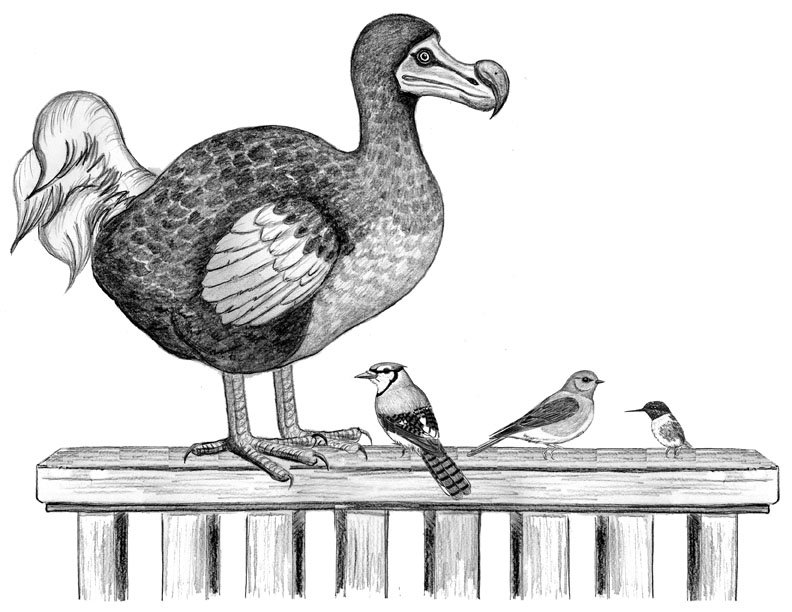
Dear Bird Folks,
Whenever I visit my aunt, I like to sit with her and watch the birds on her feeder. It makes for a pleasant morning. This got me wondering: Other than being fun to look at, do birds really have any other purpose?
– Burt, Falmouth, MA
Of course they do, Burt,
I can’t believe that you asked me if birds have a purpose. What kind of silly question is that? The answer is obvious. Their purpose is to keep me in business. Isn’t that enough? If it weren’t for birds I would have to get a job. And right now I can’t think of anything else I’d like to do…at least not until Tom Brady retires.
Believe it or not, I get similar questions nearly every day. The question usually revolves around whatever creature a particular customer happens to be upset with. She or he will ask, “What good are_____? (Fill in the blank with “squirrels,” or “chipmunks,” or “crows,” or “grackles,” etc.) These attitudes remind me of the late James Watt, who, as the U.S. Secretary of the Interior, advocated selling off remote publicly-owned land. His twisted reasoning was, if we didn’t have access, why should we save it? All aspects of nature are interwoven. Some of those aspects are obvious, while others are a bit more obscure. Nevertheless, they are all critical, even if they aren’t fully understood by you, me, Mr. Watt, or his successors. (Attention any English majors reading this. I know that last sentence has some grammatical issues, but I was trying to make a point. I’ll work on my grammar later.)
Let’s begin our discussion with hummingbirds. Such tiny birds have minimal impact on our environment, right? Wrong. In fact, hummers, with their incessant habit of sipping nectar from flowers, are very important pollinators. Each time a hummingbird dips its face into a blossom, it comes away with a bit of pollen on its beak or forehead. The pollen is then deposited on the next flower the bird visits. Throughout the world birds such as honeycreepers, sunbirds, parrots and 2,000 other species are also known for their ability to distribute pollen. (Now I have a question for the English majors. Why is pollen spelled with an “e,” while pollinating has an “i” instead? What’s going on there?)
Our old pal, the Blue Jay, a bird that many folks also grumble about, is often credited with replanting our northern forests after the last ice age. The reason why jays act like such pigs is because they actually stash and bury seeds for later. If these buried seeds happen to be acorns, and if they go uneaten, they may eventually grow into giant oak trees. Blue Jays are the avian version of Johnny Appleseed, only jays predated Johnny by five million years, give or take.
If growing oak trees doesn’t impress you, here’s something that might. It’s about saving wine. (I thought that might get your attention.) California’s Wine Country has been fighting a battle with blue-green sharpshooters, which, despite their name, aren’t characters in a superhero movie. They’re insects that spread a grapevine-killing disease. Not wanting to spray their grapes with nasty pesticides, the organic grape growers sought help…from birds. One grower installed 500 nest boxes in the hope of attracting Western Bluebirds, and it worked. The birds moved in, laid their eggs, caught the sharpshooters, and fed them to their babies. The wine crop was saved. (Now if we only can get bluebirds to do something about hangovers.)
One of my favorite stories about bird importance has to do with the tambalacoque tree. I’m sure you are very familiar with tambalacoque trees, but just in case your memory is a bit foggy, here’s a refresher. Tambalacoque trees are endemic to the Indian Ocean island nation of Mauritius. And what bird is (or was) also endemic to Mauritius? Any guesses? If you guessed Blue Jay, you’re wrong. However, if you said Dodo, you nailed it. For thousands of years both the flightless bird and the flightless tree enjoyed peaceful island lives. Then, in 1598, Dutch sailors discovered Mauritius and soon the Dodo was barbecued into extinction. Once the Dodo was gone, the tambalacoque tree also went into decline. By 1970, there were only thirteen of these trees left and no more were growing. Why wouldn’t any new trees grow? A scientist, Stanley Temple, theorized that Dodos used to eat the trees’ seeds and they (the seeds) needed to pass through the birds’ gizzards before they would germinate. Wait, what? Apparently, the hard seeds, which are like peach pits, wouldn’t grow until they were softened by the Dodo’s digestive system. To test his theory, Temple fed a few seeds to turkeys and after they (the turkeys) passed the seeds, Temple planted them and bingo, they grew and the tambalacoque tree was saved. (Since that time, other researchers have questioned the exclusive Dodo/tambalacoque tree relationship, but I’m going to ignore those questions right now because they’ll ruin my story.)
Whether they are planting mighty oaks, protecting California’s vineyards or pooping out endangered tree seeds, there is little doubt how essential birds are to our ecosystem. More significantly, Burt, birds give you and your aunt something to bond over, and that’s pretty important, too.